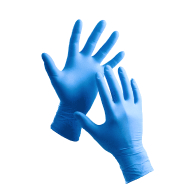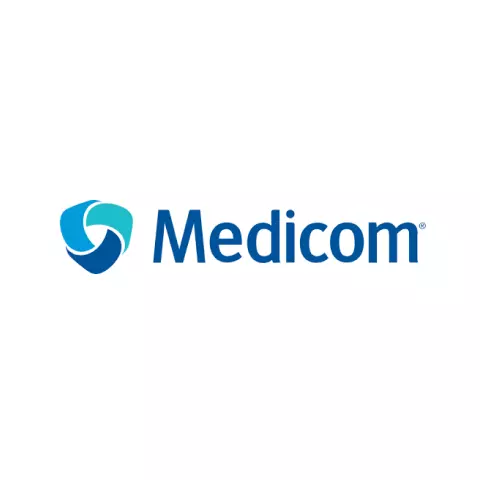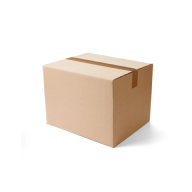WeeSafe WeePro Sterile Labo Sleeves, White
Medicom
visit storeProduct description
Sterile laboratory sleeves manufactured from lightweight Micromium material, designed for controlled contamination environments and chemical protection. These non-linting sleeves are sterilized through gamma irradiation and meet Category 1 cleanliness standards according to IEST-RP-CC003.4. They are specifically engineered for use in ISO 4 compatible environments.
Product Features:
- Lightweight Micromium material construction
- Non-linting material properties
- Gamma irradiation sterilization
- Easy tear packaging design
- Controlled contamination properties
Technical Details:
- Helmke Cat I drum certified
- Category 1 cleanliness rating
- ISO 4 environment compatible
Standards:
- EU Regulation 2016/425 compliant
- PPE Category Cat. I
- CE certified
- IEST-RP-CC003.4 tested
Measured in meters, the length determines coverage area for proper protection. Crucial for ensuring adequate hazard coverage and optimal fit for specific applications.
Indicates the visual hue of the protective covering, allowing for color-coding, visibility considerations, or transparency for monitoring protected components.
- Clean Room
- Medical Protection
Request a free sample
Test first and buy later. Visit any product page to request your free sample.
Standards and labels
EN ISO 9073-4:1997 is a standard that sets rules for testing and measuring the performance of textile fabrics. It specifies the test methods and performance requirements for the resistance of textile fabrics to water penetration, which refers to how well the fabric repels water and prevents it from penetrating the fibers. The test results are measured in terms of the fabric's resistance to water penetration. The performance requirement is that the textile fabric must meet certain standards for resistance to water penetration, meaning it should repel water well and prevent it from penetrating the fibers.
EN ISO 9001:2015 is a standard that sets out the requirements for a quality management system (QMS). It is a set of guidelines that organizations can follow to ensure that they meet customer requirements and enhance customer satisfaction. The standard is based on the plan-do-check-act model and focuses on continuous improvement. It covers the design, development, production, installation, and servicing of products. Organizations can get certified to this standard, which means that they have been independently audited and found to meet the requirements of the standard. The certification process includes regular audits to ensure that the organization continues to meet the standard's requirements.
Test results
Service Reliability PassedEN 863:1995 is a European standard that sets out the requirements for stationary fire extinguishers. These are devices that can put out fires by extinguishing the flames, and are typically installed in a fixed location like a building or vehicle. The standard covers the performance requirements for fire fighting capability, mechanical strength, durability, safety and environmental factors of stationary fire extinguishers. To meet this standard, a stationary fire extinguisher must be able to effectively put out a fire, be able to withstand certain mechanical stress, be resistant to wear and tear, have safety features such as pressure relief devices and warning devices, be able to function in different environmental conditions, and have clear markings and instructions for use. Possible test results include measurements of the extinguisher's fire fighting capability, its mechanical strength, durability, safety features, environmental factors and user instructions.
EN ISO 12947-2:1998 is a standard for measuring and evaluating the colorfastness of textiles. It establishes methods for testing colorfastness to light, washing, perspiration, and rubbing. The performance requirements for textiles to pass the test include resistance to fading, change in color, and staining. Possible test results include a grade from 1-5, with 1 indicating poor colorfastness and 5 indicating excellent colorfastness.
EN ISO 13934-1:1999 is a standard for testing the strength of textile fabrics. It sets guidelines for measuring how much force a fabric can withstand before breaking. The fabric needs to meet certain requirements such as minimal elongation and minimal breaking strength. The test results will give a value in newtons or similar unit of force. It's used to evaluate the quality and durability of fabrics.
EN ISO 13935-2:1999 is a standard that defines the methods for testing the tear propagation resistance of textile fabrics. It includes requirements for testing equipment, sample preparation and test procedures. Test results should include the tear propagation resistance, measured in newton. The standard applies to all types of fabrics, and it is used to measure how well a fabric resists tearing or spreading of a tear once it has started.
CE Marking is a label that shows a product meets certain safety and environmental standards set by the European Union. To get the CE Marking, a company must test and certify their product meets these standards. CE Marking is required for many products sold in the EU, including electronics, machinery, toys and medical devices. It helps ensure that products are safe for consumers and the environment, and allows for easy trade within the EU.
MD stands for "Medical Device." It refers to any instruments, apparatus, machines, implants, or other similar or related articles that are intended to be used for human beings for the purpose of diagnosis, prevention, monitoring, treatment or alleviation of disease, injury or disability. In Europe, a MD Label is a special label that must be on all Medical Devices that are sold or used in the European Union (EU). The label must include information about the product, such as the name of the manufacturer, the intended use of the product and CE mark. To be able to sell or use a Medical Device in the EU, the device must meet certain standards and requirements set by the European Union and notified body.
PPE stands for "personal protective equipment." PPE Category 1 refers to equipment that is simple and easy to use, and has a lower level of risk. Examples of PPE Category 1 include gloves, goggles, and simple respirators. In Europe, PPE Category 1 must meet certain safety standards set by the European Union. This means that it must be designed and manufactured to protect the user without causing harm. Companies that make or sell PPE must prove that it meets these standards.
Medicom delivery terms
Free delivery when you order more than 1 650,00 kr from Medicom
Supplier shipping fee 60,00 kr
Brand minimum 2 000,00 kr
Price available on request
Shipping fee is 60,00 kr for orders under 1 650,00 kr
A carton contains 25 packages (1 250 pieces)
Need larger quantities?
Other products you may like
Recently viewed
Need help?
Get help from our experts
Other products you may like
Similar products you may like
Recommended for you
Medicom
Delivery time: 5 business days
Orders from 2 000,00 €
Supplier shipping fee 60,00 €
Free shipping on orders over 1 650,00 €



Find +150,000 products from hundreds of brands
Autonomous sourcing platform
The most efficient way to source and order supplies for your operations
Sourcing
Ordering
List products you’re looking for and we’ll find the best products and prices for you – all for free.
Need help?
Get help from our experts
